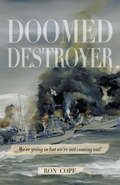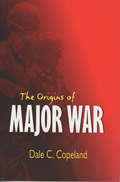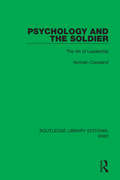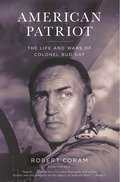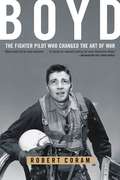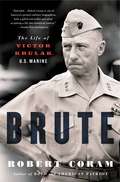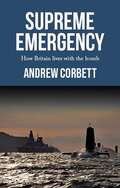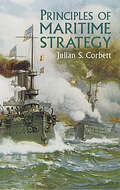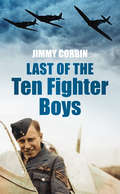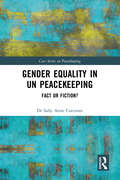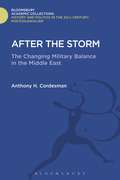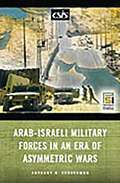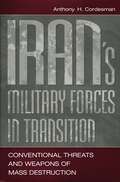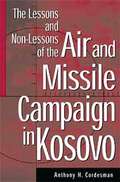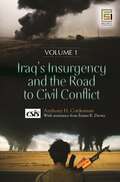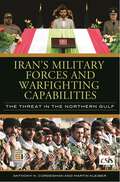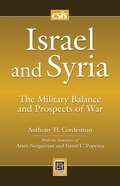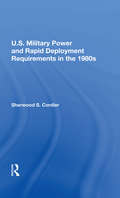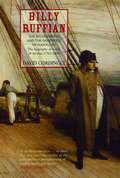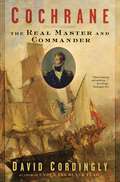- Table View
- List View
Doomed Destroyer
by Ron CopeOn March 1st 1940, Adolf Hitler ordered Operation Weserubung: the invasion of Norway. Having swept across Europe, the Nazi assault on Scandinavia was designed to secure the valuable iron ore being delivered by rail from Sweden to the Norwegian port of Narvik. To complete the task, Hitler sent ten large destroyers, with 220 Alpine Troops on each. Five smaller British H Class destroyers were sent up the fjord in retaliation, with little knowledge of what to expect. On April 10th , the first British battle of Narvik began in earnest. Royal Naval Captain Bernard Warburton-Lee led his flotilla at midnight into the fjord; undetected, under darkness and in driving snow storms. The harbour erupted into a torpedo attack; back into the fjord, the destroyers Hardy, Hunter, Hotspur, Havock and Hostilewere confronted by five German destroyers. A ferocious sea battle ensued and Hardy and Hunter were lost. In his first account of The Battle of Narvick, Attack at Dawn, Ron Cope focussed on the experience and the survival of the crew of HMS Hardy. After nine long years of research, he now reveals for the first time the untold story of HMS Hunter and her crew. Just forty-eight of the 159 servicemen on board survived in the cold waters of the fjord; picked up by German destroyers, they were eventually forced to march in freezing conditions over the mountains into internment in Sweden. Before the handover to the Swedish authorities, a German Army officer made the British servicemen sign a form: "On my being sent into Sweden I will not take up arms against Germany… Should I do so, and in the event of again being taken prisoner I shall be subject to such conditions as are provided under the Death Penalty Act”. Doomed Destroyer follows the astounding stories of the Hunter sailors, who would spend the next five years plotting and attempting to escape their captivity. Cope provides an extensive account of the viciously fought events at sea and in the fjords, examining the Norwegian price paid at Narvik and the early impact of war on the local community’s simple way of life. A remarkable account delivered with care and respect for those lost and left behind, Doomed Destroyer shines a light on this important but previously little known event in British history. “Without dedicated men like Ron Cope, the testimony and the stories of the men who were there – whether they were lost, wounded, or survived – what became of them, their families, might otherwise be lost to future generations.” Percy C. Danby, Lieutenant (E), C.D. RCN Retired. Ottawa. March 2017, survivor on HMS Hotspur.
The Origins of Major War (Cornell Studies in Security Affairs)
by Dale C. CopelandOne of the most important questions of human existence is what drives nations to war—especially massive, system-threatening war. Much military history focuses on the who, when, and where of war; in this riveting book, Dale C. Copeland brings attention to bear on why governments make decisions that lead to, sustain, and intensify conflicts. Copeland presents detailed historical narratives of several twentieth-century cases, including World War I, World War II, and the Cold War. He highlights instigating factors that transcend individual personalities, styles of government, geography, and historical context to reveal remarkable consistency across several major wars usually considered dissimilar. The result is a series of challenges to established interpretive positions and provocative new readings of the causes of conflict.Classical realists and neorealists claim that dominant powers initiate war. Hegemonic stability realists believe that wars are most often started by rising states. Copeland offers an approach stronger in explanatory power and predictive capacity than these three brands of realism: he examines not only the power resources but the shifting power differentials of states. He specifies more precisely the conditions under which state decline leads to conflict, drawing empirical support from the critical cases of the twentieth century as well as major wars spanning from ancient Greece to the Napoleonic Wars.
Psychology and the Soldier: The Art of Leadership (Routledge Library Editions: WW2 #25)
by Norman CopelandThis book, first published in 1944, stresses the point that there is no shortcut to successful wartime leadership, and pays a close analysis to the attributes that contribute to being a sound leader of soldiers. Written in the middle of the Second World War, this book gives us valuable insights into the values and training of the British Army in the second half of the war.
Psychology and the Soldier: The Art of Leadership (Routledge Library Editions: WW2 #25)
by Norman CopelandThis book, first published in 1944, stresses the point that there is no shortcut to successful wartime leadership, and pays a close analysis to the attributes that contribute to being a sound leader of soldiers. Written in the middle of the Second World War, this book gives us valuable insights into the values and training of the British Army in the second half of the war.
Social Democracy in a Post-communist Europe
by Bruno Coppieters Kris Deschouwer Michael WallerThis book examines the fortunes of social democracy since 1989 in the former GDR, Poland, Hungary, the Czech Republic and Slovakia, setting the analysis in a broader European framework, and relating the current problems of social democracy in western Europe to developments in the east of the continent.
American Patriot: The Life and Wars of Colonel Bud Day
by Robert CoramDuring the course of his military career, Bud Day won every available combat medal, escaped death on no less than seven occasions, and spent 67 months as a POW in the infamous Hanoi Hilton, along with John McCain. Despite sustained torture, Day would not break. He became a hero to POWs everywhere -- a man who fought without pause, not a prisoner of war, but a prisoner at war. Upon his return, passed over for promotion to Brigadier General, Day retired. But years later, with his children grown and a lifetime of service to his country behind him, he would engage in another battle, this one against an opponent he never had expected: his own country. On his side would be the hundreds of thousands of veterans who had fought for America only to be betrayed. And what would happen next would make Bud Day an even greater legend.
Boyd: The Fighter Pilot Who Changed the Art of War
by Robert CoramJohn Boyd may be the most remarkable unsung hero in all of American military history. Some remember him as the greatest U.S. fighter pilot ever -- the man who, in simulated air-to-air combat, defeated every challenger in less than forty seconds. Some recall him as the father of our country's most legendary fighter aircraft -- the F-15 and F-16. Still others think of Boyd as the most influential military theorist since Sun Tzu. They know only half the story. Boyd, more than any other person, saved fighter aviation from the predations of the Strategic Air Command. His manual of fighter tactics changed the way every air force in the world flies and fights. He discovered a physical theory that forever altered the way fighter planes were designed. Later in life, he developed a theory of military strategy that has been adopted throughout the world and even applied to business models for maximizing efficiency. And in one of the most startling and unknown stories of modern military history, the Air Force fighter pilot taught the U.S. Marine Corps how to fight war on the ground. His ideas led to America's swift and decisive victory in the Gulf War and foretold the terrorist attacks of September 11, 2001. On a personal level, Boyd rarely met a general he couldn't offend. He was loud, abrasive, and profane. A man of daring, ferocious passion and intractable stubbornness, he was that most American of heroes -- a rebel who cared not for his reputation or fortune but for his country. He was a true patriot, a man who made a career of challenging the shortsighted and self-serving Pentagon bureaucracy. America owes Boyd and his disciples -- the six men known as the "Acolytes" -- a great debt. Robert Coram finally brings to light the remarkable story of a man who polarized all who knew him, but who left a legacy that will influence the military -- and all of America -- for decades to come . . .
Brute: The Life of Victor Krulak, U.S. Marine
by Robert CoramFrom the earliest days of his thirty-four-year military career, Victor "Brute" Krulak displayed a remarkable facility for applying creative ways of fighting to the Marine Corps. He went on daring spy missions, was badly wounded, pioneered the use of amphibious vehicles, and masterminded the invasion of Okinawa. In Korea, he was a combat hero and invented the use of helicopters in warfare. In Vietnam, he developed a holistic strategy in stark contrast to the Army's "Search and Destroy" methods -- but when he stood up to LBJ to protest, he was punished. And yet it can be argued that all of his these accomplishments pale in comparison to what he did after World War II and again after Korea: Krulak almost single-handedly stopped the U.S. government from abolishing the Marine Corps.
Supreme emergency: How Britain lives with the Bomb
by Andrew CorbettIn Supreme emergency, an ex-Trident submarine captain considers the evolution of UK nuclear deterrence policy and the implications of a previously unacknowledged aversion to military strategies that threaten civilian casualties. Drawing on extensive archival research, the book provides a unique synthesis of the factors affecting British nuclear policy decision-making and draws parallels between government debates about reprisals for First World War zeppelin raids on London, the strategic bombing raids of the Second World War and the evolution of the UK nuclear deterrent. It concludes that among all the technical factors, an aversion to being seen to condone civilian casualties has inhibited government engagement with the public on deterrence strategy since 1915.
Supreme emergency: How Britain lives with the Bomb
by Andrew CorbettIn Supreme emergency, an ex-Trident submarine captain considers the evolution of UK nuclear deterrence policy and the implications of a previously unacknowledged aversion to military strategies that threaten civilian casualties. Drawing on extensive archival research, the book provides a unique synthesis of the factors affecting British nuclear policy decision-making and draws parallels between government debates about reprisals for First World War zeppelin raids on London, the strategic bombing raids of the Second World War and the evolution of the UK nuclear deterrent. It concludes that among all the technical factors, an aversion to being seen to condone civilian casualties has inhibited government engagement with the public on deterrence strategy since 1915.
Principles of Maritime Strategy
by Julian S. CorbettThis brilliant exposition established British naval historian Julian Corbett (1854–1922) as one of the great maritime strategists. Corbett placed naval warfare within the larger framework of human conflict, proposing that the key to maritime dominance lies in effective use of sea lines for communications and in denying that use to the enemy. His concept — which regarded naval strategy not as an end in itself but as a means to an end, with that end defined by national strategy — makes this a work of enduring value.Principles of Maritime Strategy emphasizes precise definitions of terminology and ideas as the antidote to loose and purposeless discussion and the direct path to the fundamental data on which all are agreed. As Corbett notes in the Introduction, "In this way we prepare the apparatus of practical discussion; we secure the means of arranging the factors in manageable shape, and of deducing from them with precision and rapidity a practical course of action. Without such apparatus no two men can even think on the same line; much less can they ever hope to detach the real point of difference that divides them and isolate it for quiet solution."Much quoted and referenced, this ever-relevant work is an indispensable resource for military professionals, historians, and students.
Last of the Ten Fighter Boys (History Press Ser.)
by Jimmy CorbinIn 1940, against the backdrop of the Battle of Britain, 66 Squadron's commanding officier, Squadron Leader Athol Forbes, asked ten of his pilots to record their experiences of flying one of the greatest aerial battles ever waged. The Ten Fighter Boys, published in 1942, comprised the first-hand accounts of pilot officers and sergeants pilots from all walks of life among them was Sergeant Jimmy Corbin, who wrote the third chapter. He was 23 - old by pilot standards - and, like the rest of the squadron, based at Biggin Hill, Kent. Now, sixty years later, Flight Lieutenant Jimmy Corbin, Spitfire pilot, tells his extraordinary wartime story. He describes how an ordinary working-class boy from Maidstone was propelled into the thick of action in the skies over Kent during the summer and autumn of 1940. As the sole survivor of the original Ten Fighter Boys, Jimmy's story is all the more poignant now that the men who fought the Battle of Britain pass from living memory.
Gender Equality in UN Peacekeeping: Fact or Fiction? (ISSN)
by Sally Anne CorcoranThis book investigates to what extent UNSCR 1325/WPS agenda has functioned in practice, to advance women’s equality and empowerment in the peacekeeping context and beyond.The book examines whether widespread implementation of UNSCR 1325 and the broader WPS agenda via gender mainstreaming in UN operations has translated into increased gender equality in peacekeeping operations, the broader UN institutional context and, by extension, the host countries in which missions are situated, via norm dissemination. The book investigates this via a review of the implementation of UNSCR1325 in the operations chosen as research sites over three snapshot years. The book undertakes a comparative analysis that scrutinizes if, how and under what conditions gender mainstreaming has succeeded as a strategy to advance gender equality by analyzing the factors/conditions that have led to successful gender mainstreaming across the operational context, and those that have impeded this outcome. The book concludes that, despite rhetorical commitments to women’s equality in peacekeeping since the passage of UNSCR 1325, progress on the ground has remained minimal, and that the operational environment continues to be discriminatory against women. Both quantitatively and qualitatively, women do not participate as equal partners in peacekeeping and continue to have less access to resources and decision-making power, overall. The book interrogates that by exploring the spaces available within law, policy and practice of the UN to pursue the human rights agenda of gender equality and considers whether UNSCR 1325 has enlarged those spaces. It also points to the irony of internal UN structures failing to adequately adapt to their own gender mainstreaming mandates, while those same structures have delivered some gender equality mandates successes externally, at local levels.This book will be of interest to students of peacekeeping, gender studies, and International Relations.
Gender Equality in UN Peacekeeping: Fact or Fiction? (ISSN)
by Sally Anne CorcoranThis book investigates to what extent UNSCR 1325/WPS agenda has functioned in practice, to advance women’s equality and empowerment in the peacekeeping context and beyond.The book examines whether widespread implementation of UNSCR 1325 and the broader WPS agenda via gender mainstreaming in UN operations has translated into increased gender equality in peacekeeping operations, the broader UN institutional context and, by extension, the host countries in which missions are situated, via norm dissemination. The book investigates this via a review of the implementation of UNSCR1325 in the operations chosen as research sites over three snapshot years. The book undertakes a comparative analysis that scrutinizes if, how and under what conditions gender mainstreaming has succeeded as a strategy to advance gender equality by analyzing the factors/conditions that have led to successful gender mainstreaming across the operational context, and those that have impeded this outcome. The book concludes that, despite rhetorical commitments to women’s equality in peacekeeping since the passage of UNSCR 1325, progress on the ground has remained minimal, and that the operational environment continues to be discriminatory against women. Both quantitatively and qualitatively, women do not participate as equal partners in peacekeeping and continue to have less access to resources and decision-making power, overall. The book interrogates that by exploring the spaces available within law, policy and practice of the UN to pursue the human rights agenda of gender equality and considers whether UNSCR 1325 has enlarged those spaces. It also points to the irony of internal UN structures failing to adequately adapt to their own gender mainstreaming mandates, while those same structures have delivered some gender equality mandates successes externally, at local levels.This book will be of interest to students of peacekeeping, gender studies, and International Relations.
After The Storm: The Changing Military Balance in the Middle East (History and Politics in the 20th Century: Bloomsbury Academic)
by Anthony H. CordesmanThis comprehensive analysis documents the military forces in each Middle Eastern country at the end of the Cold War. Cordesman discusses security developments and provides a qualitative and quantitative analysis of the strength and effectiveness of every army, navy, air force, and air defence force in the region. He further assesses post-Cold War modernization and expansions plans and each country's internal security situations, the role the military plays in its government and internal tensions and civil wars. Special attention is paid to Iran and Iraq and the author examines the military changes in both countries as responses to the Iran-Iraq and the First Gulf War.After the Storm is unique in combining the evaluation of conventional forces with assessments of developments in biological, chemical and nuclear weapons and provides a coherent picture of the state of the military in the Middle East in the early 1990s. Summary tables and charts present keys statistics for the region, formatted to allow quick country by country comparisons.
Arab-Israeli Military Forces in an Era of Asymmetric Wars (Praeger Security International)
by Anthony H. CordesmanThe reality of the Arab-Israeli balance now consists of two subordinate balances: Israel versus Syria and Israel versus the Palestinians. The book analyzes these two balances in detail and their impact on defense planning in each country and on the overall strategic risk to the region as a whole. It covers military developments in each of six states-Egypt, Israel, Jordan, Lebanon, Syria, and Palestine-and provides an analytical view with charts and tables of how the changing natures of the military and political threats faced by each is impacting its military force readiness and development. The book has the most comprehensive data on past, current, and future military force structure currently available, drawn from the widest range of sources.Responding to the most recent of events in the region, this book is the first to deal with the effects on the Arab-Israeli military balance of the strategic uncertainty created by the Iraqi insurgency and the Iranian nuclear program. It also studies how the Gaza pullout, the Syrian withdrawal from Lebanon, the changing political landscape in Israel, and the threat of nuclear proliferation are having impacts on the Egyptian-Israeli and Jordanian-Israeli peace accords and the prospects for a settlement between the Palestinians and Israelis. The roles of Hezbollah, Hamas, and Palestinian Islamic Jihad are analyzed in light of the changing political landscape in both Israel and Palestine. Given the role of Syria in the Palestinian-Israeli affairs, the book also explores the ways that internal instability in Lebanon could escalate into a regional conflict.
Iran's Military Forces in Transition: Conventional Threats and Weapons of Mass Destruction (Non-ser.)
by Anthony H. CordesmanIran today is still struggling with the legacy of its own Islamic revolution, and is deeply divided between the moderates who enjoy broad public support and the conservatives who control the levers of power. The mixed policies that result are reflected in Iran's ambivalent military posture. In recent years, Iran has only conducted a limited build-up of its armed forces and has cut defense spending and arms imports. On the other hand, Iran has developed a carefully focused program that threatens shipping in the lower Gulf and the world's oil exports. It has strengthened its capability for unconventional warfare and continues to be a significant proliferator, setting up indigenous military industries and developing a greater ability to import weapons. In this authoritative analysis of interest to Middle Eastern specialists and military affairs experts alike, Anthony Cordesman concludes that the continuation of Iran's current defensive security posture depends as much on these economic factors as on the outcomes of domestic political rivalries.Iran may eventually limit any military expansion to a necessary defensive strength and set strategic goals for itself that are compatible with the legitimate interests of other nations, or it may choose a more aggressive course. Regardless of the ultimate outcome, argues Cordesman, it does no good to either demonize or excuse Iranian policies. Instead, the United States and other nations with interests in the Middle East and Central Asia need to deal realistically with Iran as a reemerging regional power.
The Lessons and Non-Lessons of the Air and Missile Campaign in Kosovo
by Anthony H. CordesmanThe conclusion of a war typically signals the beginning of a flood of memoirs and instant campaign histories, many presenting the purported, but often dubious lessons of the recent conflict. Cordesman is careful to avoid such pitfalls in this detailed and closely reasoned analysis, and helps us to begin to understand the implications of this dramatic conflict on its own terms. Based on a combination of official and unofficial (but always authoritative) sources, he builds a thorough case for the true lessons of NATO's first battle fought within Europe.After consideration of the historical, major political, and strategic factors that set the stage for the Kosovo campaign, Cordesman critically examines the actual effectiveness of the NATO air campaigns, both in Kosovo and Serbia proper. Operations in this rugged part of Europe were difficult, and compounding the challenges of terrain and weather were the conflicting national agendas within the Allied coalition that seriously hampered focused and decisive action by NATO. Although Milosevic ultimately conceded defeat, all of these factors played an important role in limiting the intensity and shaping the military outcome of the campaign, and the likely political and strategic results were far from certain. Cordesman unflinchingly concludes, that the air campaign over Kosovo exposed deep fault lines within and among the NATO countries and fundamental flaws in the way the West wages war.
Iraq's Insurgency and the Road to Civil Conflict [2 volumes]: [2 volumes] (Praeger Security International)
by Anthony H. Cordesman Emma R. DaviesThe war in Iraq has expanded from a struggle between Coalition forces and the remnants of former regime loyalists to a multi-faceted conflict involving numerous Sunni groups, Shi'ite militias, Kurdish nationals, and foreign jihadists. Iraq's Insurgency and the Road to Civil Conflict is Anthony Cordesman's latest assessment of the Iraqi conflict and documents its entire evolution, from the history of ethnic tensions through the current U.S. surge. He identifies each actor in the arena, analyzes their motivations, and presents a detailed record of their actions, tactics, and capabilities. Cordesman's exhaustive study, based on meticulous research, is the most thorough account of the war to date.Beginning with the consequences of imperial colonialism and touching upon the ethnic tensions throughout Saddam's regime, Cordesman examines and details the confluence of forces and events that have paved the way toward Iraq's current civil conflict. He analyzes major turning points, including elections, economic developments, and key incidents of violence that continue to shape the war. Finally, he outlines the lessons learned from this history and what can and cannot be done to stabilize the nation.
Iran's Military Forces and Warfighting Capabilities: The Threat in the Northern Gulf (Praeger Security International)
by Anthony H. Cordesman Martin KleiberNations around the world are uncertain and anxious about Iran's intentions in the Middle East and the wider global arena. Its current president, Mahmoud Ahmadinejad, has made no secret of his opposition to Western society, particularly Israel, and his desire to acquire nuclear weapons. However, as Anthony H. Cordesman and Martin Kleiber point out, Ahmadinejad does not necessarily speak for the Iranian clerical regime, who operate in a cloud of secrecy and also directly control Iran's military. Given the ambiguous nature of Iran's global objectives, this new study focuses on the tangible aspects of Iran's military forces and takes an objective look at the realistic threats that Iran poses to the region and the world. The authors systematically assess each aspect of Iranian military forces from their conventional armies to their asymmetric threat via proxy wars in the region.Much attention in national security debates is paid to Iran's intentions without first understanding its capabilities. Lacking such a fundamental understanding, much of this speculation tends to be wasted and irrelevant to what could actually happen in the event of a conflict. Cordesman and Kleiber's study provides, in meticulous detail, a basis for understanding the realistic threat that Iran poses to the Northern Gulf.
Israel and Syria: The Military Balance and Prospects of War (Praeger Security International)
by Anthony H. Cordesman Aram Nerguizian Inout C. PopescuIsrael and Syria: The Military Balance and Prospects of War provides a detailed and current picture of the military capabilities of Israel and Syria, reflecting the changes and lessons of the Israel-Hezbollah War in 2006 and other recent conflicts. It offers extensive analysis, supported by tables and charts, on the trends in military spending, arms imports and technology transfers, military manpower, weapons, and orders of battle. By going beyond military balance analysis, Cordesman examines the probable nature and results of a future war and how the readiness, capability, tactics, and technology on each side would shape its outcome.Israel and Syria: The Military Balance and Prospects of War shows how a dangerous new conflict between both nations would cripple all strides in strategic gains and Israeli-Syrian diplomacy. On the other hand, peace negotiations would offer a safer, more productive relationship. Israel and Syria need to consider the true nature of their military balance and the undermining effect to both nations as well as the costs and risks of any future conflict. Although Syria does retain important options in terms of asymmetric and proxy conflicts, it would fail in its attempt to recapture the Golan. While Israel would almost certainly win a future war, it cannot make gains from acquiring more Syrian territory and a new war would create major problems with its neighbors and in dealing with the Palestinians.The risk of a new Israeli-Syrian conflict is so serious that both sides need to understand the true nature of their military balance, and the costs and risks of any future conflict. Israel and Syria: The Military Balance and Prospects of War shows how dangerous a new conflict could be, that neither side can make lasting strategic gains from a future conflict, and that peace negotiations offer a far safer and more productive option. It provides a detailed and current picture of the military capabilities of Israel and Syria, reflecting the changes and lessons of the Israel-Hezbollah War in 2006 and other recent conflicts. Israel and Syria: The Military Balance and Prospects of War provides extensive analysis, supported by tables and charts, on the trends in military spending, arms imports and technology transfers, military manpower, weapons, and orders of battle. By going beyond military balance analysis, Cordesman examines the probable nature and results of a future war and how the readiness, capability, tactics, and technology on each side would shape its outcome.
U.s. Military Power And Rapid Deployment Requirements In The 1980s
by Sherwood S CordierThis book assesses U.S. military needs in the coming decade, focusing on the role of rapid deployment forces in protecting U.S. interests abroad. Dr. Cordier begins by discussing two general developments crucial to future military requirements: first, increasing U.S. dependence on the global sea-lanes as links to key markets; and second, improved S
U.s. Military Power And Rapid Deployment Requirements In The 1980s
by Sherwood S CordierThis book assesses U.S. military needs in the coming decade, focusing on the role of rapid deployment forces in protecting U.S. interests abroad. Dr. Cordier begins by discussing two general developments crucial to future military requirements: first, increasing U.S. dependence on the global sea-lanes as links to key markets; and second, improved S
Billy Ruffian: The Bellerophon And The Downfall Of Napoleon
by David CordinglyThis is the story of the Bellerophon, a ship of the line known to her crew as the Billy Ruffian. Under fourteen captains, she played a conspicuous part in three of the most famous of all sea battles: the battle of the Glorious First of June (1794), the opening action against Revolutionary France; the battle of the Nile (1798), which halted Napoleon's eastern expansion from Cairo; and the battle of Trafalgar (1805), which established British naval supremacy for 100 years and during which her captain was shot dead with a musket ball an hour before Nelson was mortally wounded. But her crowning glory came six weeks after the Battle of Waterloo, when the Napoleon, trapped in La Rochelle, surrendered to the captain of the ship that had dogged his steps for more than twenty years.
Cochrane: The Real Master and Commander
by David CordinglyIn this fascinating account of Thomas Cochrane's extraordinary life, David Cordingly (Under the Black Flag and The Billy Ruffian) unearths startling new details about the real-life "Master and Commander"-from his heroic battles against the French navy to his role in the liberation of Chile, Peru, and Brazil, and the stock exchange scandal that forced him out of England and almost ended his naval career. Drawing on previously unpublished papers, his own travels, wide reading, and original research, Cordingly tells the rip-roaring story of the archetypal Romantic hero who conquered the seas and, in the process, defined his era.
